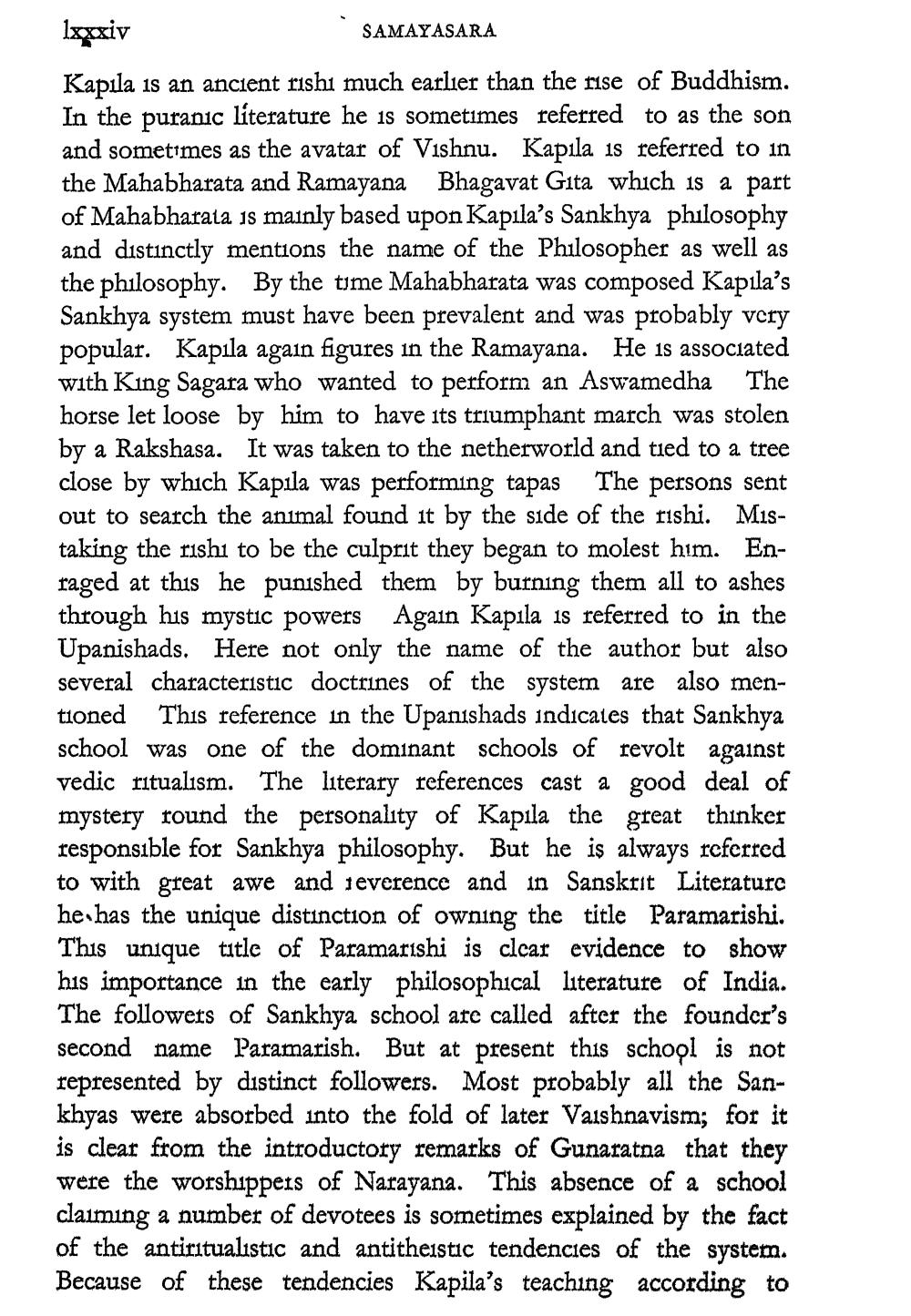________________
lxxxiv
Kapila is an ancient rishi much earlier than the rise of Buddhism. In the puranic literature he is sometimes referred to as the son and sometimes as the avatar of Vishnu. Kapila is referred to in the Mahabharata and Ramayana Bhagavat Gita which is a part of Mahabharata is mainly based upon Kapıla's Sankhya philosophy and distinctly mentions the name of the Philosopher as well as the philosophy. By the time Mahabharata was composed Kapila's Sankhya system must have been prevalent and was probably very popular. Kapila again figures in the Ramayana. He is associated with King Sagara who wanted to perform an Aswamedha The horse let loose by him to have its triumphant march was stolen by a Rakshasa. It was taken to the netherworld and tied to a tree close by which Kapila was performing tapas The persons sent out to search the animal found it by the side of the rishi. Mistaking the rishi to be the culprit they began to molest him. Enraged at this he punished them by burning them all to ashes through his mystic powers Again Kapila is referred to in the Upanishads. Here not only the name of the author but also several characteristic doctrines of the system are also mentioned This reference in the Upanishads indicates that Sankhya school was one of the dominant schools of revolt against vedic ritualism. The literary references cast a good deal of mystery round the personality of Kapila the great thinker responsible for Sankhya philosophy. But he is always referred to with great awe and reverence and in Sanskrit Literature he has the unique distinction of owning the title Paramarishi. This unique title of Paramarishi is clear evidence to show his importance in the early philosophical literature of India. The followers of Sankhya school are called after the founder's second name Paramarish. But at present this school is not represented by distinct followers. Most probably all the Sankhyas were absorbed into the fold of later Vaishnavism; for it is clear from the introductory remarks of Gunaratna that they were the worshippers of Narayana. This absence of a school claiming a number of devotees is sometimes explained by the fact of the antiritualistic and antitheistic tendencies of the system. Because of these tendencies Kapila's teaching according to
SAMAYASARA




